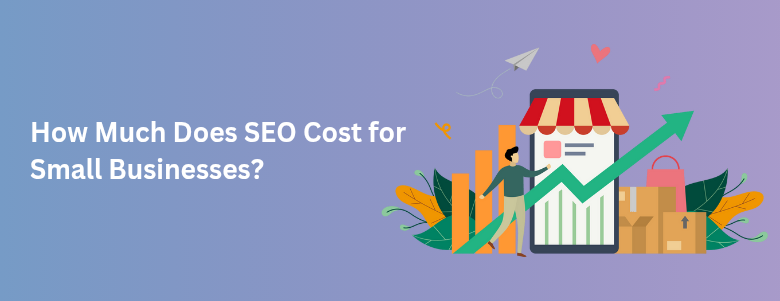Where to Sell Small Business Products Online: Top Platforms to Consider
Discover the top online selling platforms in India for small businesses. Explore the best marketplaces to boost sales and grow your brand. The Benefits of Selling on the Online Marketplace in India Selling products online has transformed the way small businesses operate. With the rise of e-commerce platforms, businesses can reach a wider audience, increase sales, and establish a strong digital presence. Here are some key benefits of selling on online marketplaces in India: Wider Audience Reach: Online platforms provide access to millions of potential customers across India and beyond. Lower Operational Costs: Unlike physical stores, online marketplaces reduce expenses related to rent, utilities, and staff. Easy Setup and Management: Most e-commerce platforms offer user-friendly interfaces and support to help businesses get started. Marketing and Visibility: Marketplaces often provide built-in marketing tools to enhance product visibility. Secure Payment Options: Many platforms offer secure payment gateways, ensuring smooth transactions.Customer Insights and Analytics: Sellers can access valuable customer behavior and preferences data Top 18 Online Selling Platforms in India Numerous selling platforms are available, but choosing the right one depends on your business niche, target audience, and product category. Here are the top 20 online-selling platforms in India: 1. Amazon.in Amazon India is one of the largest e-commerce platforms, offering a vast customer base and reliable logistics support. It is an ideal choice for businesses looking for scalability and brand exposure. Recommended Guide a)How to set up an Amazon Seller account b)Amazon FBA vs. FBM: Which is better? 2. Shopify Shopify allows businesses to create their own branded online store. It provides customizable templates, payment integrations, and marketing tools to enhance sales. 3. Myntra Myntra is a leading fashion marketplace in India, perfect for businesses selling clothing, accessories, and lifestyle products. 4. ShopClues Known for offering budget-friendly products, ShopClues suits businesses targeting price-sensitive customers. 5. Snapdeal Snapdeal provides a wide range of product categories and a vast customer base, making it an attractive platform for small businesses. 6. Meesho Meesho is popular for social commerce, allowing small businesses to sell through WhatsApp and Facebook. 7. Nykaa Nykaa is a top beauty and wellness marketplace, making it the go-to platform for cosmetic brands and skincare businesses. 8. AJIO AJIO specializes in fashion and lifestyle products, offering a curated platform for designers and boutique owners. 9. FirstCry FirstCry is the largest marketplace for baby and kids’ products, making it an excellent choice for businesses in this niche. 10. IndiaMART IndiaMART is a B2B marketplace where wholesalers and manufacturers can sell products in bulk. 11. Pepperfry Pepperfry is a specialized marketplace for furniture and home decor businesses. 12. Tata Cliq Tata Cliq is a premium online shopping destination that caters to high-end brands and exclusive merchandise. 13. LimeRoad LimeRoad is a unique fashion and lifestyle platform focusing on personalized shopping experiences. 14. Reliance Digital Ideal for businesses selling electronics and gadgets, Reliance Digital offers a trusted brand presence. 15. Bigbasket Bigbasket is India’s largest online grocery store suitable for food and beverage businesses. 16. Facebook Marketplace Facebook Marketplace enables small businesses to sell directly to local buyers without needing a separate e-commerce website. 17. Bonanza.com Bonanza is a global online selling site that allows Indian businesses to sell internationally. 18. Allegro A rapidly growing marketplace, Allegro provides opportunities for sellers looking to expand beyond India. How WebGi Can Help You Set Up an Online Marketplace for Your Business WebGi is a leading digital marketing and web development agency that helps businesses establish and optimize their online presence. Here’s how Webgi can assist in setting up your online marketplace: FAQ 1. What is the best online-selling app in India? The best app depends on your product category. Amazon, Flipkart, and Shopify are excellent choices for a broad range of products. 2. What site can I sell stuff on without paying fees? Facebook Marketplace and Meesho allow sellers to list products without upfront fees. 3. How do I start selling online in India? Choose a suitable platform, create a seller account, list your products, and market them effectively. 4. Is selling on Amazon profitable? Yes, but profitability depends on product pricing, demand, and competition. 5. How do I choose the best online selling platform? Consider factors like target audience, product niche, fees, and marketing support before selecting a platform. Conclusion Choosing the right platform to sell small business products online is crucial for success. Whether you opt for established marketplaces like Amazon and Flipkart or set up your store on Shopify, each platform offers unique advantages. By leveraging the right digital marketing strategies and platforms, small businesses can scale their online presence and boost sales effectively. If you need expert assistance, Webgi is here to help you launch and grow your online marketplace.
Where to Sell Small Business Products Online: Top Platforms to Consider Read More »









